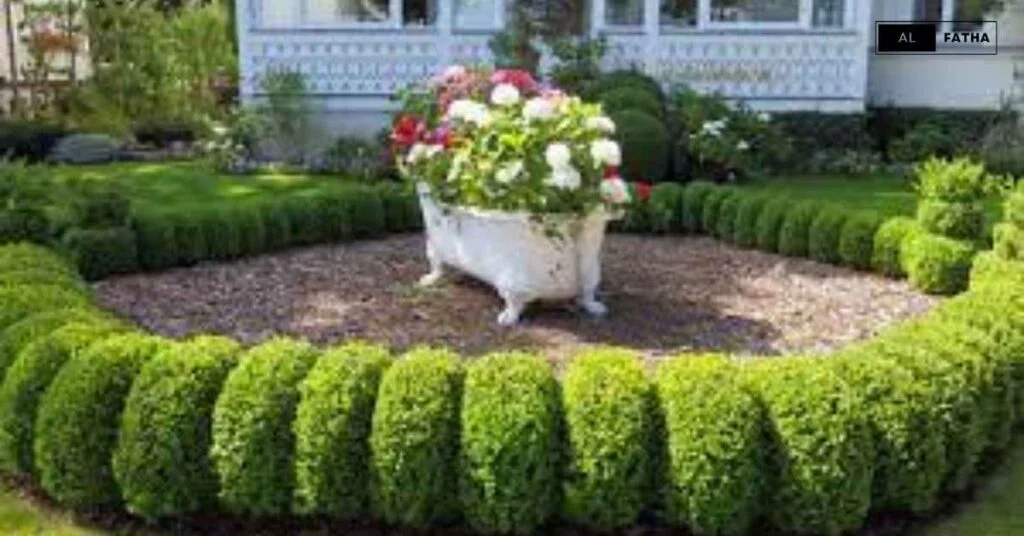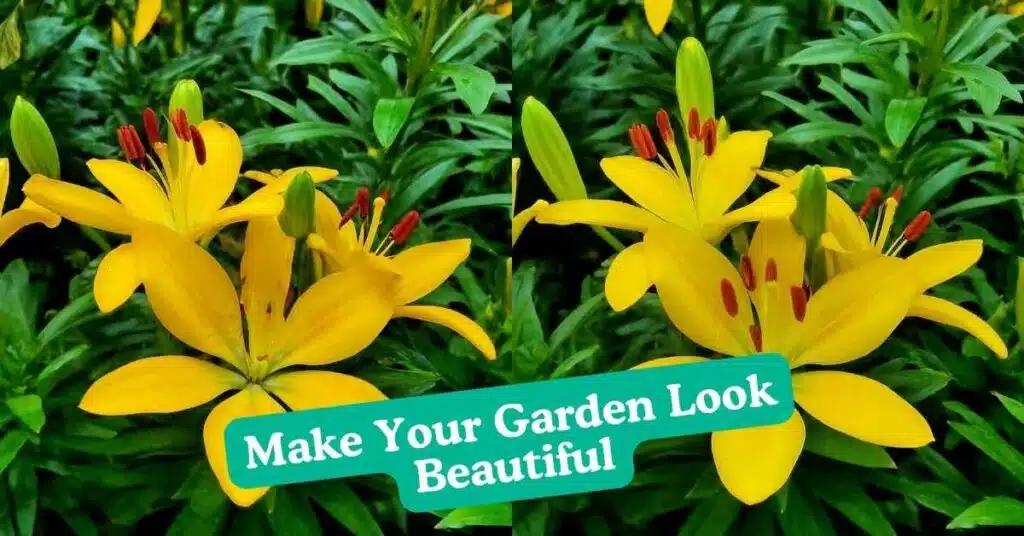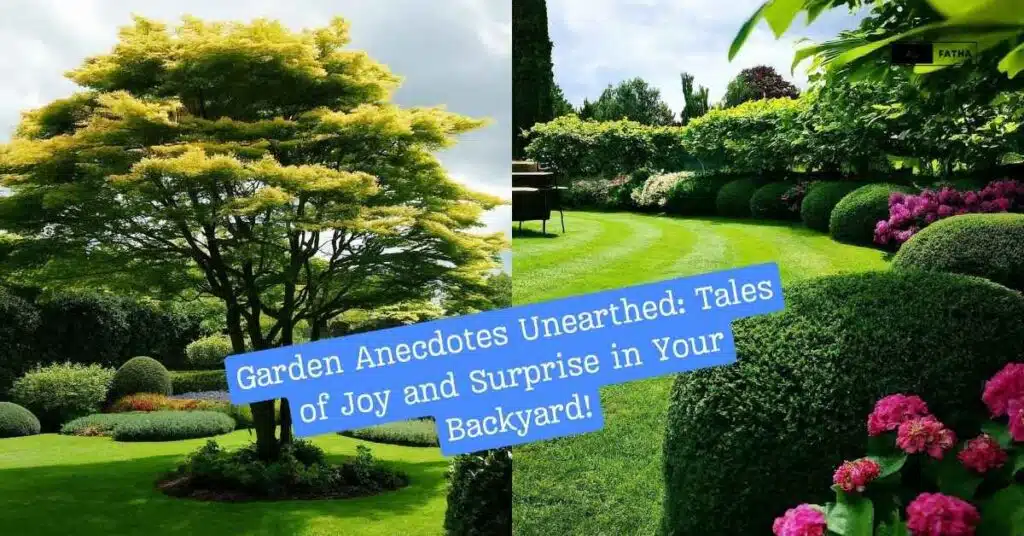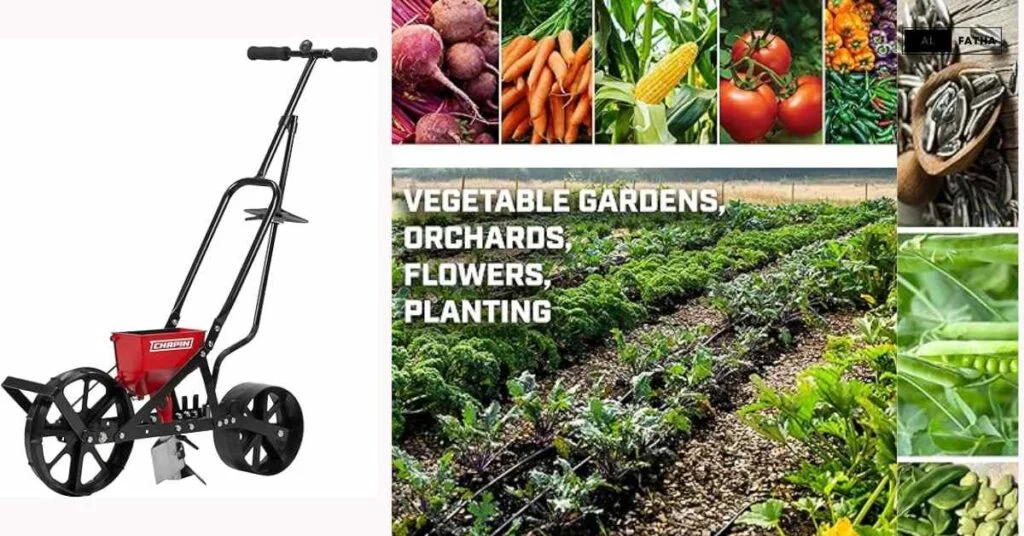Garden Design with Lighting: Extend Your Enjoyment into the Night
Table of Contents
1. Introduction

Welcome to the world of vibrant gardens designed to captivate not only the eye but also the fluttering guests essential to our ecosystem—butterflies, bees, and hummingbirds. In this article, we delve into the art of crafting a garden that goes beyond aesthetics, focusing on the deliberate choices and designs that attract and nourish these vital pollinators.
Garden Design for Pollinators: Attract Butterflies, Bees, and Hummingbirds is your guide to creating outdoor spaces that not only enhance your surroundings but also contribute to the well-being of our planet. From essential gardening basics to creative design ideas, we’ll explore the elements that make your garden a sanctuary for pollinators.
Let’s embark on a journey where beauty meets ecological responsibility, and where your garden becomes a haven for the delicate dance of nature.
2. Garden Basics and Essentials
2.1 Essential Elements for Successful Garden Design
Creating a pollinator-friendly garden begins with understanding and incorporating essential elements. Soil health plays a pivotal role in providing a nourishing environment for plants, and consequently, for pollinators. Ensure your garden soil is rich in nutrients by using compost and organic matter. This fundamental action creates the conditions for a healthy ecology.
2.2 Improving Soil for Optimal Plant Growth
Delve into the specifics of your soil composition and make necessary amendments. Test the pH levels and adjust as needed to support a diverse range of plants that appeal to pollinators. Healthy soil not only fosters robust plant growth but also contributes to the overall vitality of your garden ecosystem.
2.3 Introduction to Different Garden Styles: Formal and Informal
Before diving into specific designs, familiarize yourself with garden styles. The formal garden exudes a structured and symmetrical layout, while the informal garden embraces a more relaxed and natural appearance. Understanding these styles allows you to tailor your garden to your preferences while keeping in mind the needs of butterflies, bees, and hummingbirds.
In the realm of pollinator-friendly gardens, balance is key. Blend formal and informal elements to create a harmonious space that not only appeals to the human eye but also provides varied habitats for pollinators.
As you embark on the journey of garden design, remember that the basics and essentials form the backbone of a successful, thriving space. By implementing these fundamental steps, you’re laying the groundwork for a garden that not only flourishes visually but also becomes a welcoming haven for essential pollinators. In the subsequent sections, we will explore the intricacies of designing your garden with these elements in mind.
3. Designing Your Garden from Scratch


3.1 Step-by-Step Guide to Designing a Garden
Embarking on the creation of a pollinator-friendly garden requires a systematic approach. Follow this step-by-step guide to ensure a well-thought-out and purposeful design:
Assessment of Space: Begin by assessing the available space. Consider factors such as sunlight exposure, soil quality, and existing features.
Define Purpose: Clarify the purpose of your garden. Are you focusing on attracting specific pollinators, creating a visual spectacle, or cultivating herbs and vegetables?
Outline Budget: Establish a budget to guide your choices. This ensures a practical and feasible garden design that aligns with your financial resources.
Create a Plant List: Research and compile a list of plants that attract butterflies, bees, and hummingbirds. Consider their blooming seasons for year-round appeal.
Sketch Your Design: Develop a rough sketch of your garden layout. Include areas for focal points, pathways, seating, and pollinator-friendly plants.
Incorporate Hardscaping Elements: Integrate hardscaping elements like pathways, borders, and water features strategically to enhance both aesthetics and functionality.
3.2 Considerations for Soil, Style, and Structure
As you progress in designing your garden, pay special attention to key considerations:
Soil Optimization: Building on the soil assessment, implement necessary improvements to ensure optimal plant growth. This step directly influences the health of the entire ecosystem.
Embrace Different Styles: Experiment with formal and informal garden styles to find the right balance. Formal designs may include geometric shapes and structured layouts, while informal designs offer a more relaxed and natural appearance.
Structural Elements: Introduce elements such as topiary, pathways, and focal points. These not only contribute to the overall aesthetics but also serve as important features for pollinators to navigate and thrive.
3.3 Exploring Formal and Informal Garden Designs
Dive deeper into the specifics of formal and informal garden designs:
Formal Garden Elements: Leverage symmetrical layouts, manicured hedges, and carefully planned geometries to create a polished and sophisticated space.
Informal Garden Charm: Embrace the beauty of imperfection with meandering pathways, wildflower patches, and a more relaxed arrangement of plants. This style mimics the natural habitats preferred by many pollinators.
With these insights, you’re equipped to design a garden from scratch that not only aligns with your vision but also caters to the needs of butterflies, bees, and hummingbirds. The subsequent sections will further guide you through the specific elements and plant selections to make your pollinator-friendly garden a reality.
4. Key Elements of a Pollinator-Friendly Garden


4.1 Choosing the Right Plants
Selecting the right plants is the cornerstone of a garden that attracts and sustains pollinators. Opt for a diverse array of flowers, shrubs, and trees that offer varying shapes, sizes, and blooming periods. This not only provides a visual feast for humans but also ensures a continuous supply of nectar for pollinators throughout the seasons.
Native Plants: Prioritize native plants, as they are well-adapted to the local ecosystem and serve as natural food sources for local pollinators.
Colorful Blooms: Choose flowers in a spectrum of colors, as different pollinators are attracted to different hues. Vibrant colors like red, orange, and purple are particularly appealing.
4.2 Creating Distinct Levels and Incorporating Trees
Diversity in your garden’s structure is key to accommodating various pollinator species. Consider the following:
Distinct Levels: Create a multi-tiered garden with ground covers, medium-height plants, and taller shrubs or trees. This mimics natural habitats and offers shelter and foraging opportunities for different pollinators.
Tree Selection: Integrate trees into your garden to provide nesting sites for birds, shelter for insects, and additional nectar sources. Fruit trees, flowering trees, and evergreens can contribute to the overall biodiversity.
4.3 Importance of Water Features
Water is a vital component in any garden, especially for pollinators. Here’s why:
Drinking and Bathing: Pollinators need water for hydration and cleanliness. Incorporate a shallow bird bath or small water feature to attract a variety of winged visitors.
Planting Near Water: Place pollinator-friendly plants near water features to create an inviting oasis. The combination of flowers and water can be particularly alluring to butterflies and bees.
In your pollinator-friendly garden, thoughtful plant selection and strategic garden structure are crucial. The next sections will delve into creative garden design ideas and DIY projects that not only enhance the visual appeal of your outdoor space but also contribute to the well-being of the essential pollinators in your ecosystem.
5. Garden Design Ideas and Inspiration
5.1 16 Creative Garden Design Ideas
Revitalize your outdoor space with these creative and functional garden design ideas:
Shape Your Lawn: Transform your lawn into an eye-catching feature by experimenting with geometric shapes, curves, or even asymmetrical patterns.
Strategic Planting: Plan your planting strategically, considering the colors, sizes, and textures of plants. Create visually appealing arrangements that also cater to pollinators’ preferences.
Tree Haven: Designate an area for trees, providing shade, nesting sites, and a dynamic element that changes with the seasons.
Beautiful Paving: Enhance your garden’s aesthetics with well-designed pathways and paving. Opt for materials that complement the overall theme while offering functionality.
Distinct Levels: Create visual interest and cater to different pollinator needs by incorporating varied levels in your garden. Raised beds, terraces, or garden walls can achieve this effect.
Outdoor Furniture: Choose outdoor furniture that not only provides comfort for human enjoyment but also integrates seamlessly into the overall garden design.
5.2 Tips for Shaping and Maintaining a Healthy Lawn
A lush, well-maintained lawn is not just a backdrop but a crucial element of your garden design. Consider these tips:
Proper Mowing: Adopt proper mowing practices to encourage healthy grass growth and create a uniform, well-manicured appearance.
Fertilization and Weed Control: Implement a fertilization schedule and weed control measures to ensure your lawn remains healthy and resilient.
Aeration: Periodic aeration promotes better water and nutrient absorption, contributing to a thriving lawn.
5.3 Planning and Arranging Planting for Visual Appeal and Pollinator Attraction
The arrangement of plants plays a pivotal role in both aesthetics and pollinator attraction:
Color Schemes: Experiment with color schemes that harmonize with your garden’s theme. Consider complementary colors to create visual impact.
Blooming Seasons: Plan for continuous blooms throughout the seasons, ensuring a steady supply of nectar for pollinators.
Butterfly and Hummingbird Gardens: Create dedicated sections in your garden with plants specifically tailored to attract butterflies and hummingbirds. These areas can be visually striking while serving as pollinator magnets.
Incorporate these garden design ideas into your outdoor space to create a harmonious and inviting environment for both you and your winged visitors. The subsequent sections will guide you through DIY projects, seasonal garden designs, and the selection and maintenance of plants for a pollinator-friendly haven.
6. DIY Garden Projects


6.1 Budget-Friendly Garden Ideas
Enhance your garden without breaking the bank with these budget-friendly ideas:
Repurposed Containers: Use old containers, crates, or even tires as unique planters. This adds a touch of creativity while reusing materials.
DIY Garden Décor: Craft your garden accessories using recycled materials. Build birdhouses, create garden art, or repurpose old furniture to add character to your space.
Seed Swaps: Join or organize seed swap events with fellow garden enthusiasts. This not only diversifies your plant collection but also fosters a sense of community.
6.2 Small Garden Design Tips
Maximize the potential of limited space with these small garden design tips:
Vertical Gardening: Utilize vertical space with hanging baskets, trellises, or wall-mounted planters. This creates visual intrigue while saving ground space.
Container Gardening: Grow herbs, flowers, or even vegetables in containers. This allows flexibility in rearranging your garden and is ideal for those with limited outdoor space.
Mirrors for Illusion: Arrange mirrors so as to provide the impression of more space. This not only expands the visual boundaries but also adds a reflective element to your garden.
6.3 Engaging in Garden DIY Projects
Unleash your creativity with these engaging garden DIY projects:
Pallet Planters: Repurpose pallets into vertical planters for herbs or small flowering plants. This eco-friendly project adds a rustic touch to your garden.
Stone Pathways: Create charming pathways using natural stones or pavers. This DIY project adds both functionality and visual appeal to your garden.
Upcycled Garden Furniture: Give old furniture a new life with a fresh coat of paint or varnish. Turn an old bench or chairs into a cozy seating area within your garden.
Embrace these DIY projects to infuse personality into your garden while adhering to a budget. Small spaces can be transformed into charming havens, and creative projects can elevate your garden to new heights. In the following sections, we will explore seasonal garden designs, plant selection, and maintenance tips to further enrich your pollinator-friendly outdoor space.
7. Seasonal Garden Designs


7.1 Tailoring Garden Designs for Different Seasons
Crafting a garden that thrives year-round requires thoughtful consideration of each season. Here’s how to tailor your garden for various times of the year:
Summer Garden Ideas:
Opt for heat-resistant plants with vibrant colors to create a lively summer garden.
Incorporate shaded areas and water features to provide relief for both plants and pollinators during hot days.
Winter Garden Ideas:
Choose evergreen plants and trees to maintain visual interest during the winter months.
Introduce bird feeders and shelters to attract winter birds, enhancing the ecological balance of your garden.
Spring Garden Ideas:
Embrace the burst of color associated with spring by planting bulbs and early blooming flowers.
Ensure there are ample nectar sources for pollinators emerging from hibernation.
January Garden Ideas:
Plan for winter interest by incorporating plants with unique textures and structures.
Utilize frost-tolerant plants and evergreens to maintain garden appeal during colder months.
7.2 Creating Garden Retreats
Transform your garden into a retreat for relaxation and contemplation:
Garden Patios:
Designate a comfortable patio area with outdoor furniture for a tranquil space to enjoy your garden.
Consider incorporating fragrant plants and ambient lighting for a cozy atmosphere.
Rustic Garden Accessories:
Introduce rustic accessories like wooden benches, lanterns, or handmade garden art to enhance the charm of your retreat.
Hanging Baskets:
Utilize hanging baskets to add vertical interest and a touch of whimsy to your garden.
Plant trailing flowers and foliage for a cascading effect that captures attention.
7.3 Seasonal Entertaining Spaces
Make your garden a versatile space for entertaining guests throughout the seasons:
Garden Entertaining Ideas:
Create designated areas for entertaining with ample seating, perhaps around a central fire pit for warmth in colder seasons.
Integrate portable planters or container gardens that can be rearranged to suit different occasions.
Spring and Summer Entertaining:
Enhance your garden with colorful blooms and playful décor during spring and summer gatherings.
Consider temporary installations such as fairy lights or outdoor lanterns for evening events.
Incorporating seasonal variations into your garden design ensures a dynamic and ever-evolving space. Whether you seek solace in a garden retreat, plan to entertain guests, or simply want to enjoy the beauty of nature, adapting your garden to different seasons guarantees a delightful experience throughout the year.
The subsequent sections will guide you through the selection and maintenance of plants, offering insights into creating a pollinator-friendly haven in every season.
8. Plant Selection and Maintenance
8.1 Introducing a 3D-Garden Defense Strategy: Merge Plants for Biodiversity
Enhance the ecological diversity of your garden through a 3D-Garden Defense strategy:
Companion Planting: Pair plants that benefit each other, such as those that repel pests or attract beneficial insects.
Layered Planting: Implement vertical layering with tall trees, medium-height shrubs, and ground-level plants to create a thriving, multi-dimensional ecosystem.
Diverse Habitats: Create micro-habitats within your garden by incorporating various plant structures. For example, provide climbing surfaces for vines or shrubs for nesting and shelter.
8.2 Tips on Selecting and Maintaining Plants
Choose and care for your plants with these essential tips:
Native Plants:
Prioritize native plants as they are adapted to local conditions and support local wildlife.
Research native species that specifically attract butterflies, bees, and hummingbirds.
Continuous Blooms:
Select plants that bloom at different times of the year to provide a consistent food source for pollinators.
Aim for a variety of flower shapes and sizes to accommodate the diverse needs of butterflies, bees, and hummingbirds.
Pollinator-Friendly Trees:
Integrate flowering trees like dogwood, cherry, or magnolia to attract pollinators with both nectar and nesting sites.
Low-Maintenance Options:
Consider low-maintenance plants to minimize the effort required for upkeep while still contributing to a vibrant garden.
8.3 Balancing Classic and Contemporary Landscapes
Harmonize traditional and modern elements for a balanced garden design:
Classic Elements:
Incorporate classic garden features such as symmetrical layouts, traditional paving, and timeless plant varieties.
Classic elements provide structure and elegance to your garden.
Contemporary Additions:
Introduce modern touches through innovative planters, minimalist furniture, or sleek water features.
Contemporary additions bring a fresh and dynamic feel to your garden.
8.4 Insights from the Chelsea Flower Show
Glean inspiration from the prestigious Chelsea Flower Show:
Cutting-Edge Designs:
Explore cutting-edge garden designs showcased at the Chelsea Flower Show for contemporary inspiration.
Note how designers incorporate sustainability and biodiversity into their creations.
Plant Selection Strategies:
Analyze the plant selection strategies employed by award-winning gardens to understand how to create visually stunning yet ecologically conscious landscapes.
8.5 The Role of Garden Designers in Creating Pollinator-Friendly Landscapes
Understand the significance of professional expertise:
Expertise in Plant Selection:
Garden designers possess in-depth knowledge of plants, ensuring the selection of species that align with both aesthetic and ecological goals.
Creating Habitat Diversity:
Garden designers excel in creating diverse habitats that cater to various pollinator needs, contributing to a thriving ecosystem.
8.6 Updates and Trends in Garden and Landscape Design
Stay informed about the latest trends and updates:
Sustainable Practices:
Explore sustainable garden practices such as rainwater harvesting, composting, and environmentally friendly pest control.
Stay updated on emerging technologies that contribute to eco-friendly garden management.
Biodiversity Conservation:
Follow trends emphasizing biodiversity conservation and habitat restoration in garden and landscape design.
Stay connected with gardening communities to share insights and learn about new developments.
Incorporating these insights into your plant selection and maintenance practices ensures a garden that not only delights the senses but also promotes biodiversity and supports the well-being of butterflies, bees, and hummingbirds.
The subsequent sections will guide you through the final steps of creating a pollinator-friendly haven, offering updates on garden and landscape design and concluding with a recap of key points.
9. Expert Perspectives


9.1 Insights from the Chelsea Flower Show
The prestigious Chelsea Flower Show serves as a wellspring of inspiration for garden enthusiasts and designers alike. Explore the following insights from this acclaimed event:
Cutting-Edge Designs:
Immerse yourself in the latest trends and avant-garde designs showcased at the Chelsea Flower Show. These designs often push the boundaries of conventional garden aesthetics.
Innovative Plant Pairings:
Observe how designers experiment with unique plant combinations, marrying colors, textures, and shapes to create visually arresting displays.
Sustainability Emphasis:
Recognize the growing emphasis on sustainability in garden designs exhibited at Chelsea. Discover how designers integrate environmentally conscious practices into their creations.
9.2 The Role of Garden Designers in Creating Pollinator-Friendly Landscapes
Understanding the pivotal role of garden designers in crafting pollinator-friendly landscapes:
Expertise in Plant Selection:
Garden designers bring a wealth of knowledge to the table, ensuring the selection of plants that not only enhance visual appeal but also cater to the specific needs of pollinators.
Creating Habitat Diversity:
Garden designers excel in crafting landscapes that offer diverse habitats. This diversity is crucial for attracting a wide array of pollinators, providing them with suitable nesting sites, and fostering a balanced ecosystem.
Balancing Aesthetics and Ecology:
Garden designers strike a delicate balance between creating stunning visual landscapes and maintaining ecological integrity. Learn how they seamlessly blend classic and contemporary elements to achieve this harmony.
9.3 Updates and Trends in Garden and Landscape Design
Stay abreast of the latest developments in garden and landscape design:
Sustainable Practices:
Explore innovative sustainable practices gaining popularity in the gardening community. From eco-friendly materials to water-wise landscaping, discover ways to minimize your environmental impact.
Biodiversity Conservation:
Embrace the growing trend of biodiversity conservation in garden design. Understand how modern designs contribute to preserving and enhancing local ecosystems.
Technological Integration:
Stay informed about technological advancements shaping garden and landscape design. From smart irrigation systems to virtual garden planning tools, technology is enhancing the efficiency and sustainability of gardens.
9.4 Design Updates
Keep your garden design fresh with these updates:
Seasonal Adaptations:
Explore how garden designs can be adapted seasonally, ensuring your outdoor space remains vibrant and attractive throughout the year.
Functional Design Elements:
Learn about functional design elements that serve both aesthetic and practical purposes. Elements such as rain gardens, permeable paving, and wildlife-friendly features contribute to the overall functionality of your garden.
Community Collaboration:
Engage with local gardening communities to exchange ideas and insights. Collaborative efforts often lead to the development of innovative and community-driven garden designs.
Incorporate insights from expert perspectives to elevate your garden design and stay attuned to the dynamic and evolving world of gardening. The final section will provide a concise recap of the key points discussed throughout the article, encouraging readers to implement the outlined ideas for a flourishing and pollinator-friendly garden.
10. Conclusion
In conclusion, Garden Design for Pollinators: Attract Butterflies, Bees, and Hummingbirds serves as a comprehensive guide to creating a vibrant and eco-conscious outdoor space. By embracing essential garden basics, designing with purpose, and selecting plants that cater to pollinators, you can transform your garden into a haven for biodiversity.
The integration of creative design ideas, budget-friendly DIY projects, and seasonal adaptations ensures a dynamic and visually appealing landscape. Expert perspectives from the Chelsea Flower Show underscore the importance of sustainability and the expertise of garden designers in achieving a harmonious balance between aesthetics and ecology.
Stay informed about the latest trends, technological advancements, and community collaboration to continually update and enhance your garden. As you embark on this journey, remember that every plant, every element, contributes to a thriving ecosystem, inviting butterflies, bees, and hummingbirds to dance in the beauty you’ve cultivated.
Let your garden be a testament to the power of thoughtful design in fostering both natural splendor and environmental stewardship.
11. Frequently Asked Questions (FAQs) - Garden Design for Pollinators: Attract Butterflies, Bees, and Hummingbirds
Q: Why is garden design important for attracting pollinators?
A: Garden design plays a crucial role in creating habitats that appeal to butterflies, bees, and hummingbirds. Thoughtful planning ensures the inclusion of essential elements, diverse plant selections, and strategic features that cater to the needs of pollinators, contributing to a flourishing ecosystem.
Q: What are the key elements of a pollinator-friendly garden?
A: Key elements include selecting the right plants that offer continuous blooms, creating distinct levels for varied habitats, incorporating water features, and maintaining a 3D-Garden Defense strategy through companion planting and layered vegetation. These elements contribute to a garden that attracts and sustains pollinators.
Q: How can I design a small garden to attract pollinators?
A: In small gardens, maximize space with vertical gardening, utilize containers for planting, and strategically place mirrors to create an illusion of space. Additionally, consider low-maintenance plants to make the most of limited outdoor areas.
Q: What are some budget-friendly DIY projects for a pollinator-friendly garden?
A: Budget-friendly projects include repurposing containers for planters, crafting garden décor from recycled materials, and participating in seed swap events. These projects add personality to your garden while adhering to a budget.
Q: How can I adapt my garden for different seasons to attract pollinators?
A: Tailor your garden by selecting plants that bloom in different seasons, creating winter interest with evergreens, and incorporating bird feeders for winter visitors. Designate areas for seasonal retreats and entertaining spaces to make the most of your garden year-round.
Q: What role do garden designers play in creating pollinator-friendly landscapes?
A: Garden designers bring expertise in plant selection, creating habitat diversity, and balancing aesthetics with ecological considerations. They play a crucial role in crafting landscapes that are both visually appealing and supportive of pollinator well-being.
Q: How can I stay updated on the latest trends and developments in garden design?
A: Stay informed by exploring designs showcased at events like the Chelsea Flower Show, engaging with local gardening communities, and researching sustainable practices. Follow updates on technological integration and biodiversity conservation in garden and landscape design.
Q: Why is it important to consider sustainability in garden design?
A: Sustainable practices contribute to the health of the environment and support local ecosystems. Considering sustainability in garden design involves using eco-friendly materials, implementing water-wise landscaping, and adopting practices that minimize environmental impact.
Q: Can I create a pollinator-friendly garden without professional help?
A: Absolutely! The guide provides step-by-step instructions, DIY projects, and expert insights to empower individuals to create a pollinator-friendly garden. While professional help can enhance the process, passionate gardeners can achieve remarkable results with the right knowledge and dedication.
Q: What is the main takeaway from the article?
A: The main takeaway is that garden design is a powerful tool for creating not just visually stunning landscapes but also habitats that support the well-being of butterflies, bees, and hummingbirds.








